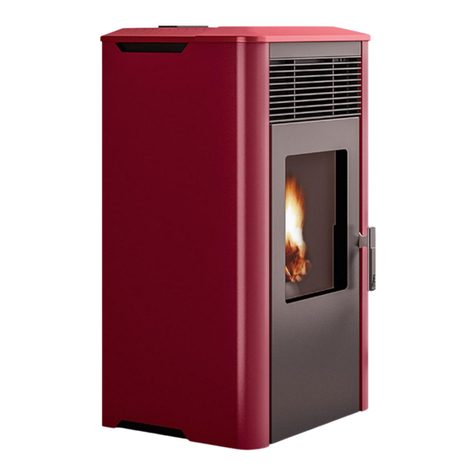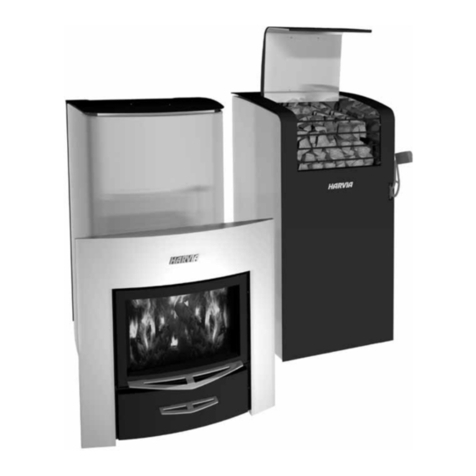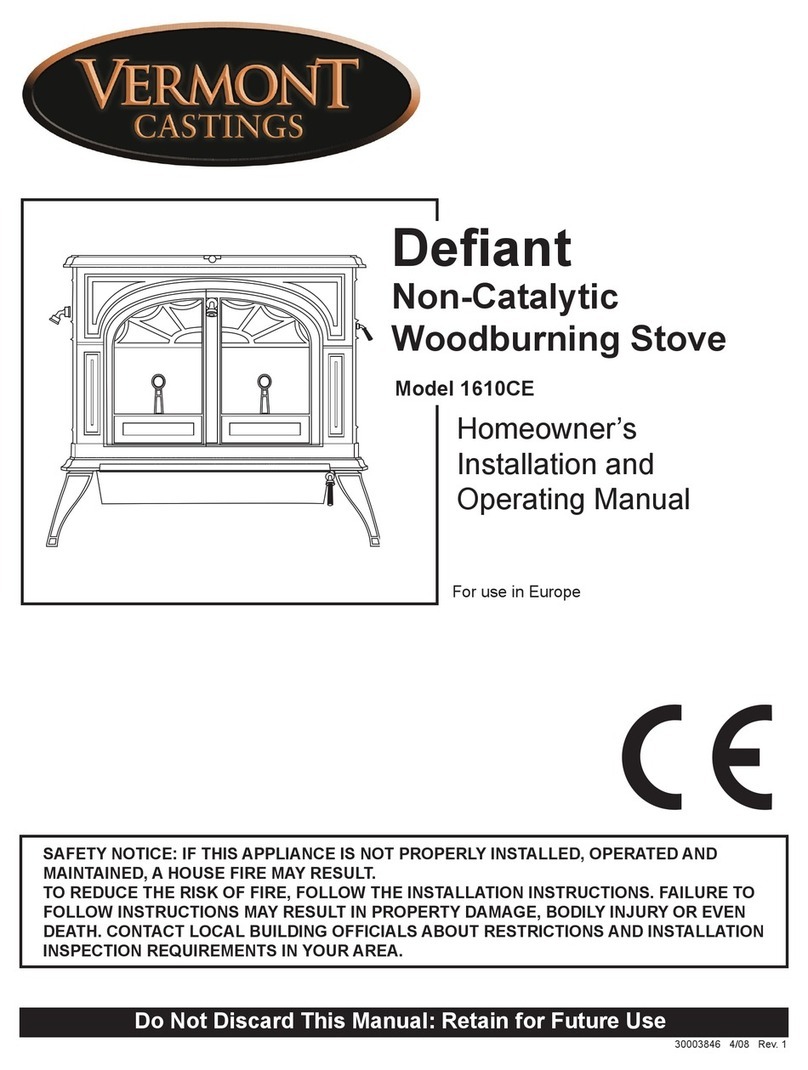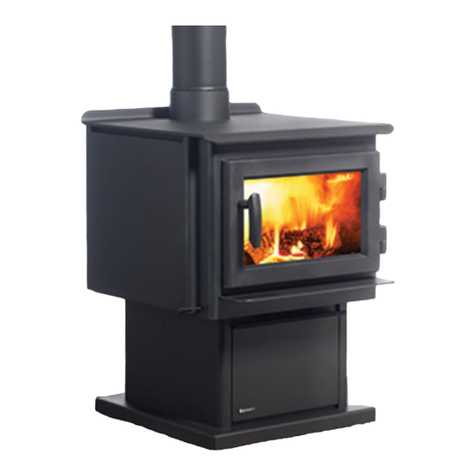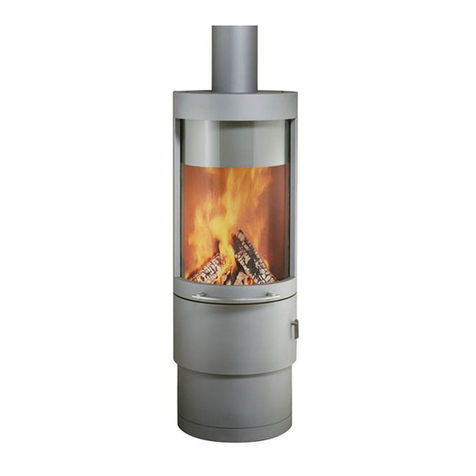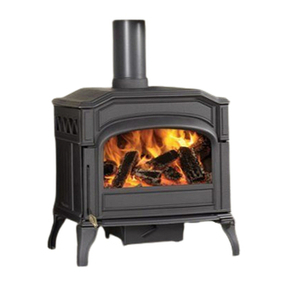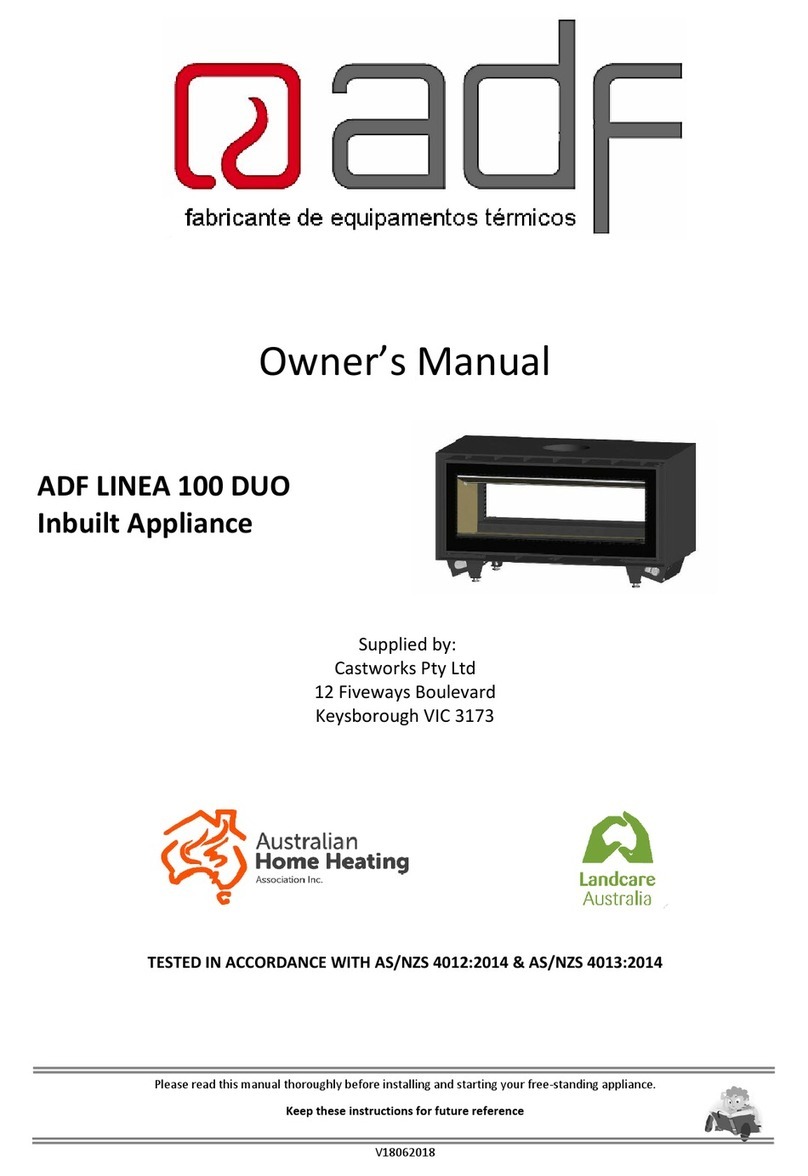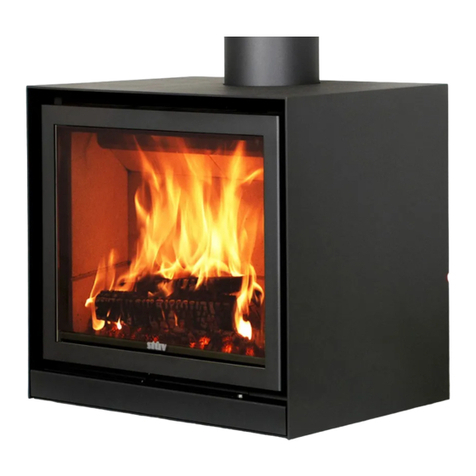T-4000 WOOD STOVE HEATER
8
MATERIALS NEEDED FOR SAFE
INSTALLATION
Fire Safety: To provide reasonable fire safety,
Thelin Hearth Products recommends the following:
1. Install at least one smoke detector on each floor of
your home. They should be located away from the
heating appliance and close to sleeping areas.
2. A Class “A” fire extinguisher should be kept
near the stove to contend with any small fires
resulting from burning embers, etc.
3. Create a house evacuation plan with at least two
escape routes and have all members of the
family aware of the plan.
4. Be aware of the possibility of a chimney fire
and know what to do, such as:
a. Notify the fire department
b. Prepare occupants for evacuation
c. Close all air openings into the stove
d. While waiting for the fire department, watch
for ignition of adjacent combustibles to
stove pipe, i.e., walls, ceiling, hot embers,
and sparks from the chimney.
VENTING SYSTEMS
The venting system consists of the following:
chimney connector, thimble, chimney system, and
termination cap. They are defined as follows:
Chimney Connector
The chimney connector, also known as the flue or
stove pipe, joins the stove to the chimney (see
Figure 6). It must be 6” (152mm) minimum
diameter, 24 MSG black or blued steel, or an
approved air-insulated double wall-venting pipe.
Thimble
A manufactured or site-constructed device installed
in combustible walls through which the chimney
connector passes to attach to the chimney system. It
is intended to keep the walls and ceiling from
catching on fire.
Chimney System
A. PREFABRICATED 6” (152mm) listed high-
temperature (UL103HT or ULC S629M)
chimney. Components required by
manufacturers for installation such as the
chimney support base, firestop (as appropriate),
attic insulation shield, insulated tee, etc., are
necessary to assure a safe installation. Use only
components manufactured for the chimney
system being used (do not mix brands).
Chimney should meet NFPA 211 standards.
B. APPROVED MASONRY (see specifications in
Figure 12 and Figure 13) with at least 5/8”
(16mm) fire clay lining joined with refractory
cement or other listed system suitable for use
with wood stoves.
Termination Cap
The cap on top of the chimney system that protects
the pipe from rain, snow, and wind. Some
installations will require a special “high wind” cap
depending upon location and prevailing wind
direction. Check with your local dealer to determine
if you need a special cap.
Venting systems get extremely hot during use.
Temperatures inside the chimney may exceed 2,000
degrees F (1,100 °C) in the event of a creosote fire.
To protect against the possibility of a house fire, the
chimney system must be properly installed and
maintained. An approved, listed thimble must be
used when a connection is made through a
combustible wall to a chimney. A chimney support
package must be used when a connection is made
through the ceiling to a prefabricated chimney.
These accessories are absolutely necessary to























